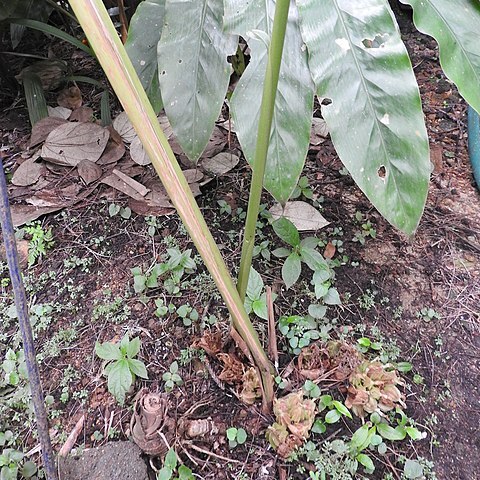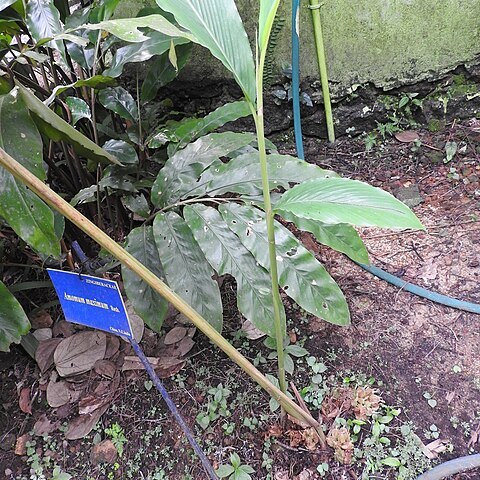Plants 2--3 m tall. Ligule pale yellow-green, oblong, 2-cleft, 1.2--2 cm, sparsely white pubescent; petiole absent to 8 cm; leaf blade oblong or long elliptic, 30--90 × 10--20 cm, adaxially glabrous, abaxially white villous, base attenuate, decurrent, apex caudate. Spikes subglobose, ca. 5 cm in diam.; bracts brownish, 2--2.5 cm, pubescent, deciduous. Calyx pale purple spotted adaxially, ca. 2.3 cm, apex 3-toothed; teeth lanceolate, ca. 5 mm. Corolla tube slightly longer than calyx; lobes white, oblong. Labellum white, yellow on each side of midvein, red striate at base, ovate, ca. 3.5 cm, apex slightly revolute, entire. Filament short; anther linear, 1--1.2 cm; connective appendage yellowish, crescent-shaped, apex slightly revolute. Capsule purple-green, ovoid, 2.5--3 × 1.8--2.4 cm, 9-winged, white pubescent; pedicel 7--10 mm. Fl. May--Jun, fr. Jun--Aug. 2 n = 48*.
More
A ginger family herb. The plant grows 2-3 m tall. It has a thick underground stem or rhizome. The leaf stalk can either not exist or be up to 8 cm long. The leaf blade is oblong and 30-90 cm long by 10-20 cm wide. It is bright green on top. Underneath is has a white covering. The flower spikes are almost round and 5 cm across. The bracts are brownish and 2-2.5 cm long. They are hairy but fall off. The flower is pale with purple spots. The fruit is a capsule which is purple-green and oval. It is 2.5-3 cm long by 1.8-2.4 cm across. It has 9 wings and fine white hairs. The seeds are oval and 5 mm long by 3 mm wide.



